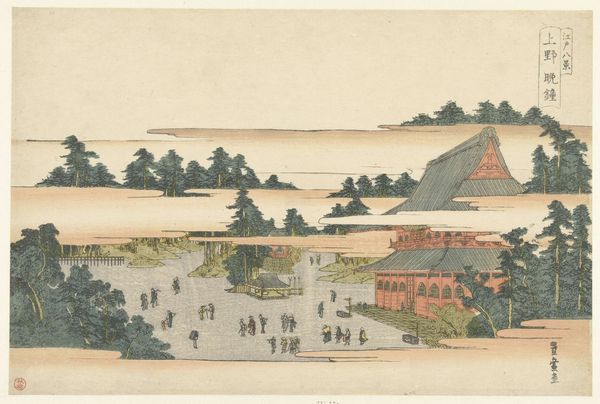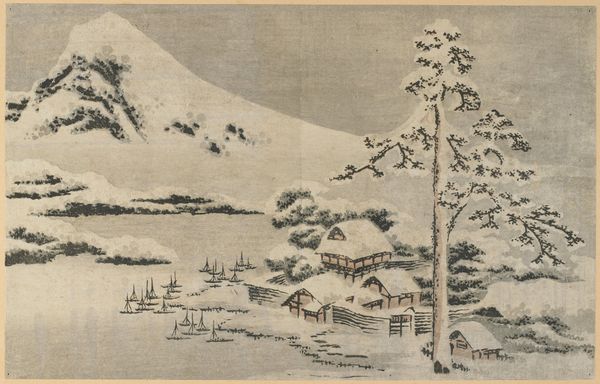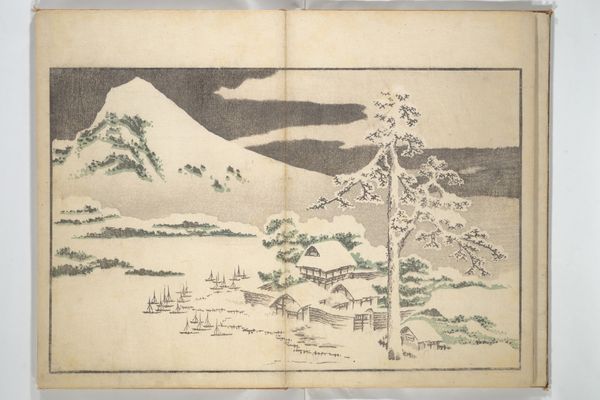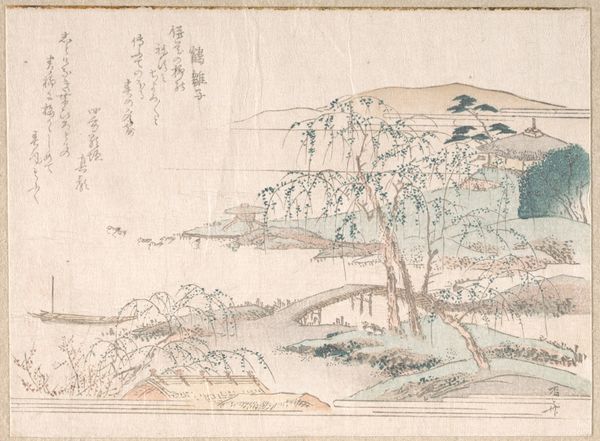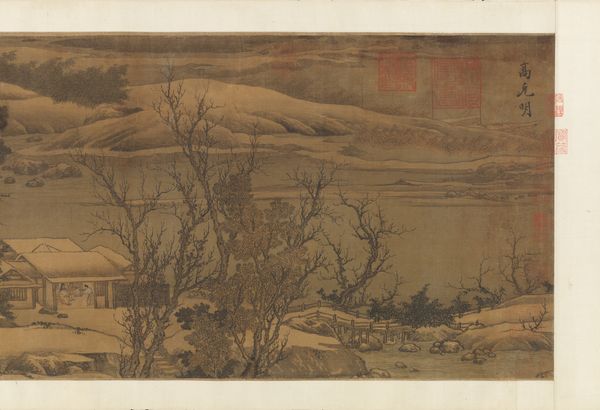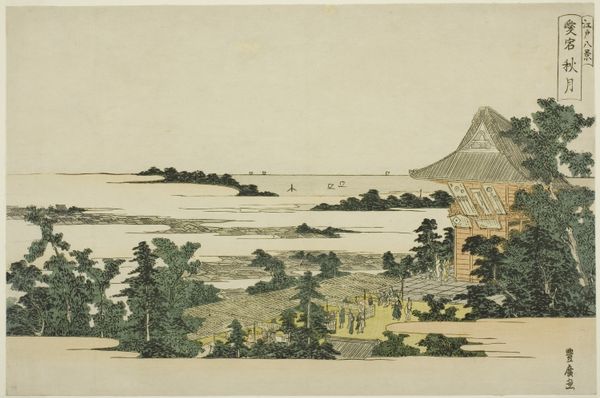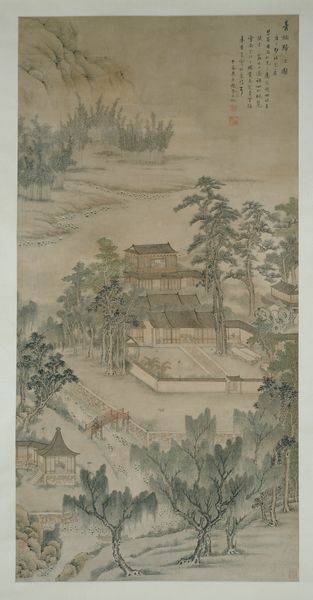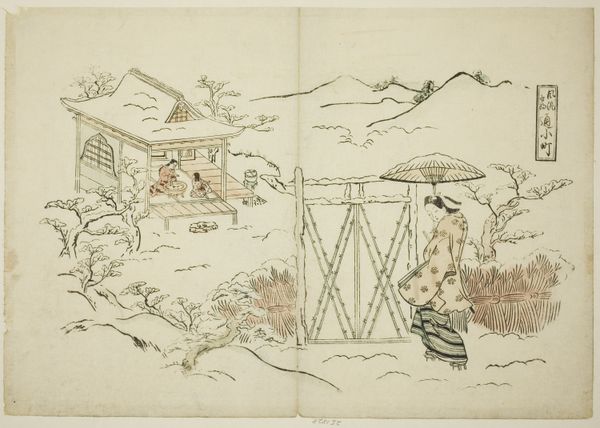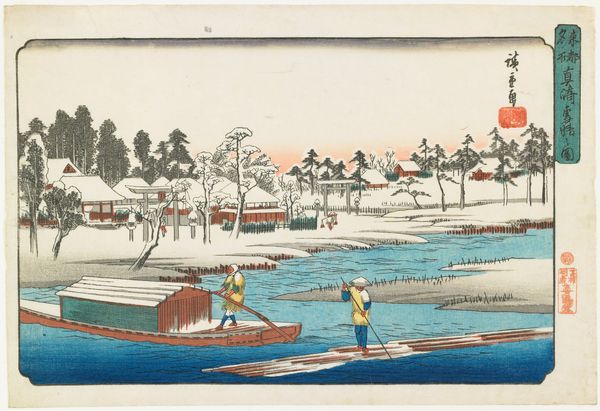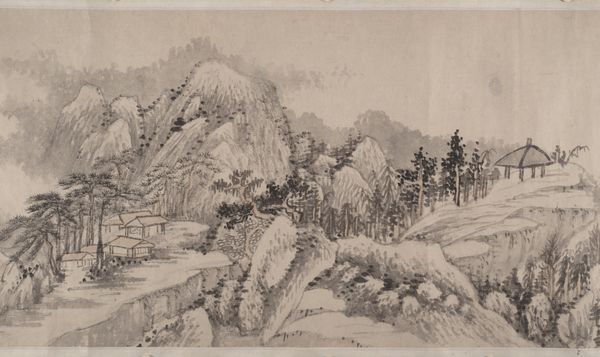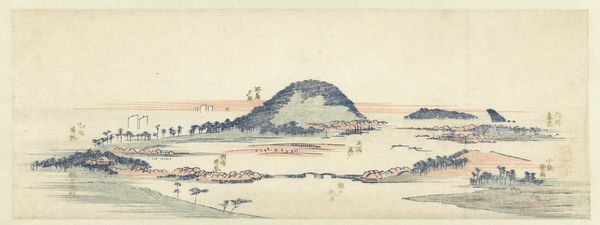
paper, ink, woodblock-print, pencil
#
aged paper
#
toned paper
#
book
#
asian-art
#
landscape
#
ukiyo-e
#
house
#
japan
#
figuration
#
paper
#
ink
#
coloured pencil
#
woodblock-print
#
underpainting
#
pencil
#
cityscape
#
watercolour illustration
#
watercolor
#
calligraphy
Dimensions: Overall: 9 3/4 x 14 7/8 in. (24.8 x 37.8 cm)
Copyright: Public Domain
Editor: This is "Eight Views of Edo," dating from 1761 to 1781, by Utagawa Toyohiro, a woodblock print with ink and color on paper. There’s something dreamlike about the hazy cityscape and the tiny figures. How would you interpret this work, thinking about its place in society at the time? Curator: Well, we have to consider Ukiyo-e prints within the context of Edo period Japan. They were very much products of a burgeoning urban culture and a growing merchant class. The "floating world" depicted wasn't just about fleeting beauty, but also about aspirations for upward mobility, cultural status, and even veiled critiques of the established social hierarchy. What kind of status did possessing such artwork grant an individual? Editor: I guess owning them allowed individuals to express an appreciation for cultural values and showcase worldly refinement that wealth alone couldn't guarantee. It was like signaling good taste and knowledge. Curator: Exactly! These prints often reflected and shaped popular taste, particularly in fashion and entertainment. And this one, by showing iconic views of Edo, functions as a kind of souvenir for locals and visitors, simultaneously solidifying and romanticizing Edo's urban identity. Editor: It’s fascinating how an artwork like this could be both commercial and culturally significant. How does the medium – the woodblock print – play into that accessibility? Curator: The woodblock printing technique enabled mass production, bringing art to a broader audience, yet, paradoxically, that access also established value. Collecting series of prints became a phenomenon, turning them into social currency within Edo society. Editor: That's a perspective shift for me! It’s not just an image; it’s an artifact tied to economic and social power. Thank you! Curator: My pleasure. Remembering the societal function reminds us that art rarely exists in a vacuum.
Comments
No comments
Be the first to comment and join the conversation on the ultimate creative platform.
